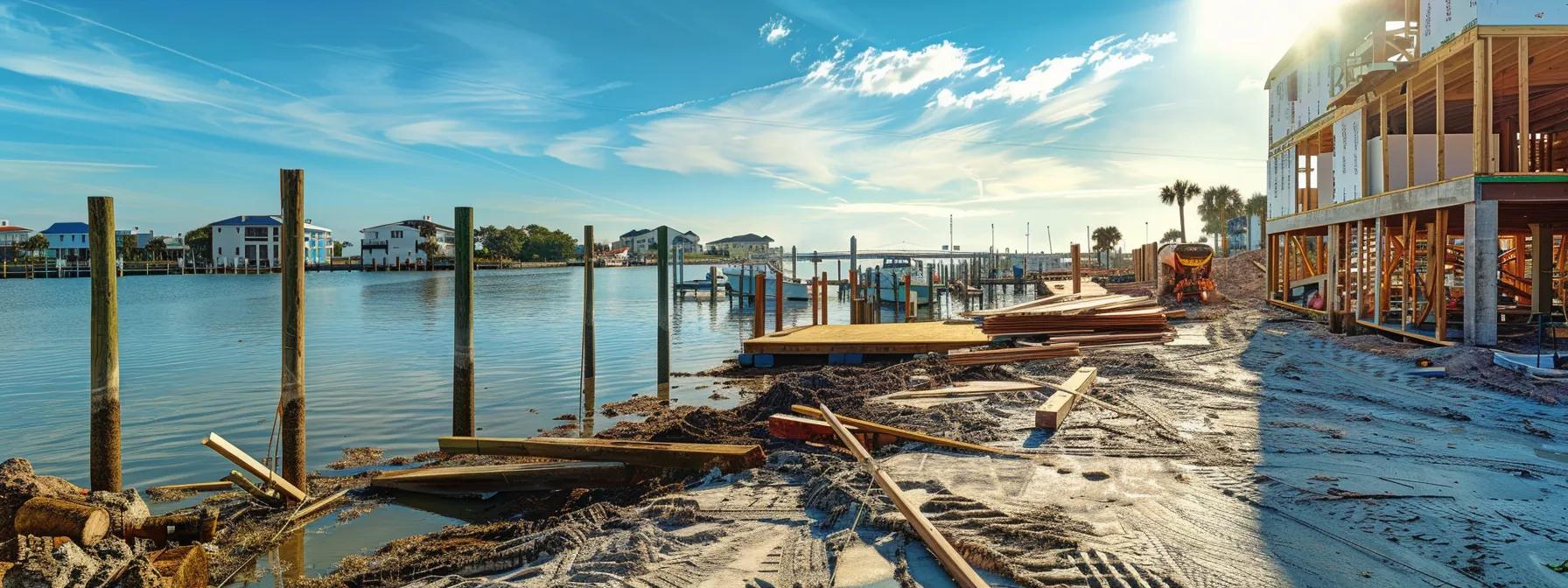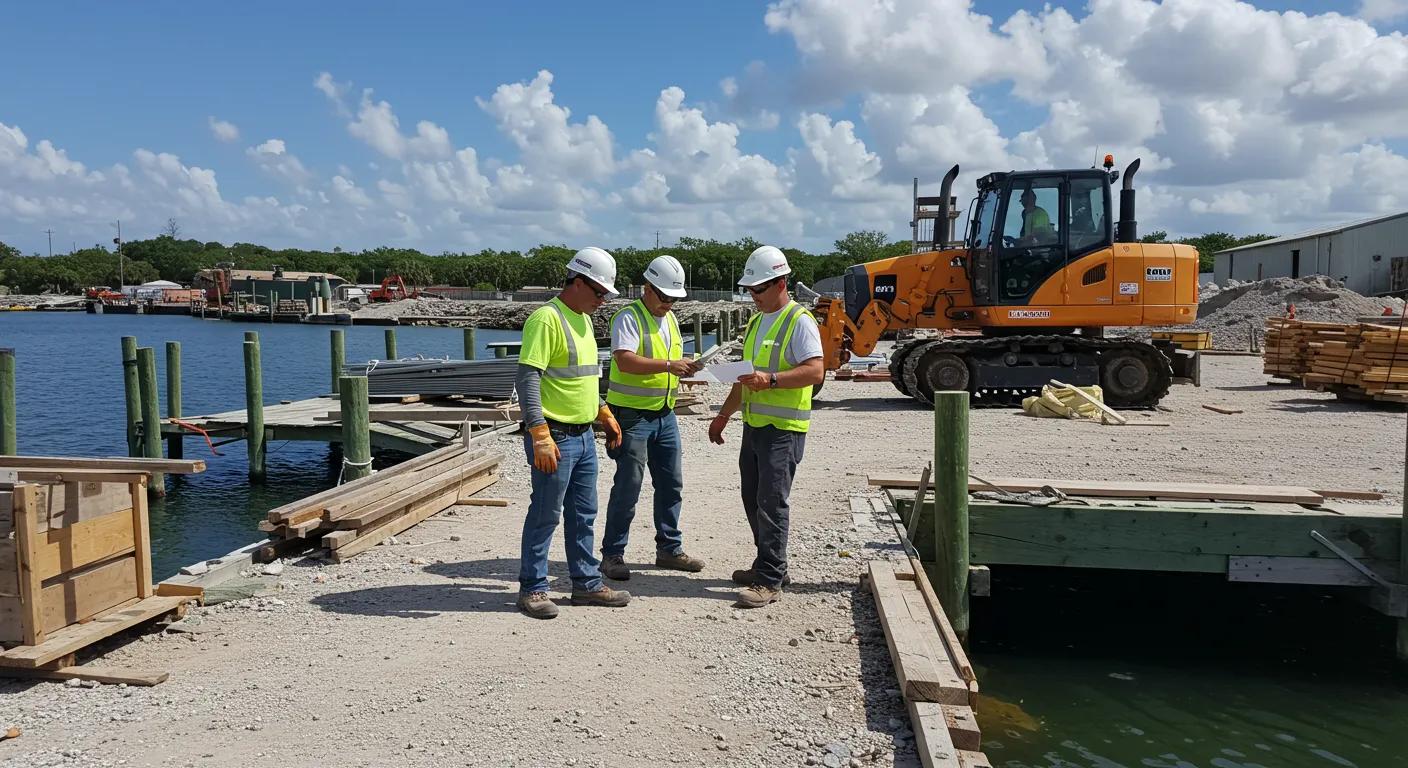Durable Materials for Waterfront Docks Explained
In waterfront construction, durability is essential. Homeowners and contractors must overcome challenges posed by constant exposure to marine environments, moisture, extreme weather, and ultraviolet radiation. Durable dock materials extend structural lifespan and minimize long‐term maintenance costs. Investing in quality, resilient materials ensures enhanced corrosion resistance, reduced environmental impact, and improved safety for watercraft and users. The selected material influences performance in both saltwater and freshwater settings and determines how the dock withstands chemical exposure, mechanical stress, and biological factors such as marine growth and mildew.
This comprehensive guide explores the essential characteristics of dock materials, robust material choices, maintenance strategies, eco-friendly considerations, and cost implications. You will gain insights into the strength, durability, and longevity required for safe and lasting waterfront docks.
Understanding Key Characteristics of Durable Materials for Waterfront Docks
Defining Strength and Resilience in Waterfront Dock Materials
Strength and resilience are the cornerstones for dock material performance. Strength is the ability to bear mechanical loads—from people, equipment, and watercraft—as well as the forces of waves and wind. Resilience refers to a material’s capacity to recover from deformation and resist long-term fatigue from repeated use and environmental impacts. In marine environments, materials are evaluated based on their resistance to corrosion and structural failure under continuous exposure to saltwater and moisture.
High-performance materials such as stainless steel and composite polymers often include additives or coatings that help prevent degradation from corrosive seawater. Studies indicate that these materials can retain nearly 90% of their strength after prolonged exposure to damp conditions. Thus, selecting materials with proven strength and resilience is key in ensuring long service lives and lowering maintenance demands.
Assessing Resistance to Water Damage for Dock Longevity
Water damage—manifesting as swelling, warping, or decay—is the primary enemy of docklongevity. Untreated wood, for instance, is highly vulnerable to rot and mildew from constant moisture exposure. In contrast, pressure-treated wood and composite decking are engineered with treatments and sealants that reduce water penetration and stave off degradation.
Water resistance is measured by a material’s absorption rate and its ability to repel moisture in humid or submerged conditions. Treatments such as anti-mildew coatings further protect dock surfaces. Materials with effective water repellency can reduce decay rates significantly, ensuring that the dock retains both its aesthetic appeal and structural integrity over time.
Evaluating UV Radiation Impact on Dock Material Stability
Ultraviolet (UV) radiation from sunlight degrades dock materials by causing fading, brittleness, and loss of mechanical properties. UV stabilization is critical; materials like aluminum and composite polymers are designed with UV inhibitors to minimize photo-degradation. For example, high-performance polymers may lose only about 5% of their tensile strength after years of exposure, whereas untreated wood can deteriorate considerably faster.
By incorporating UV inhibitors or additives that reflect or absorb harmful rays, modern dock materials maintain their visual appeal and functional properties, even under intense sunlight. This prolongs the useful life of the dock while reducing the need for frequent repairs.
The Significance of Proper Fasteners for Durable Dock Assemblies
Even the best materials can be compromised by poor fasteners. Fasteners such as stainless steel bolts, galvanized nails, and corrosion-resistant screws are vital in holding dock components together against dynamic loads and environmental forces. Using proper fasteners helps avoid premature failure from corrosion or loosening and can extend the dock’s lifespan by up to 25%.
Ensuring that fasteners are compatible with the chosen materials and resistant to galvanic corrosion is crucial. Proper fastener techniques not only improve overall durability but also reduce the risk of costly repairs and ensure a safe, long-lasting structure.
Lifespan Projections for High-Performance Dock Building Components
Predicting how long dock components will last is essential for planning maintenance and budgeting for repairs. For example, pressure-treated wood, when regularly sealed, can typically last 20–30 years, while composite decking and aluminum frameworks may endure 40–50 years under ideal conditions. Longevity depends on resistance to rot, decay, UV degradation, and mechanical stress.
Manufacturers provide warranty periods and performance data that help estimate a material’s service life. Combined with regular maintenance practices like cleaning and periodic inspections, these projections ensure that your dock remains functional, safe, and attractive over decades.
An Examination of Robust Material Choices for Waterfront Docks
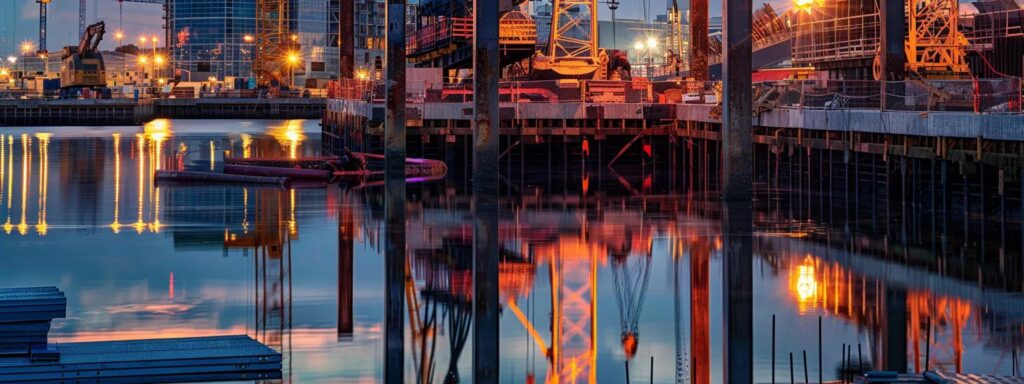
Pressure-Treated Wood a Classic for Enduring Dock Structures
Pressure-treated wood is a traditional and dependable choice for waterfront docks. Chemical preservatives infused into the wood protect against moisture, insects, and decay, significantly extending its service life. In marine environments, this treatment is critical; it prevents water infiltration that could lead to rot and structural failure.
Available in various grades, pressure-treated wood offers natural aesthetics and can be tailored to specific design requirements. Combined with routine maintenance like sealing and staining, it remains cost-effective and reliable, making it a popular option for homeowners seeking a balance between performance and traditional appeal.
Exotic Hardwoods Natural Durability for Waterfront Applications
Exotic hardwoods such as ipe, teak, and mahogany are renowned for their natural durability and resistance to harsh marine conditions. Their dense grain structures and inherent oils provide superior resistance to rot, decay, UV damage, and insect infestation—often lasting beyond 30 years with minimal degradation.
Although they typically come at a higher upfront cost, exotic hardwoods offer a rich, warm appearance and require less maintenance over time. This makes them a long-term investment for those who value both performance and aesthetic excellence in dock construction.
Composite Materials Blending Strength and Low Upkeep for Docks
Composite materials combine wood fibers with polymers to create a strong, low-maintenance alternative to traditional wood. These composites resist rot, decay, and UV degradation far better than conventional lumber, making them ideal for docks subjected to constant exposure to water and extreme weather.
Often produced with recycled content, composites represent an environmentally friendly choice. They maintain structural integrity for 40–50 years with minimal upkeep and offer design versatility that supports modern aesthetics while reducing long-term repair costs.
Aluminum a Lightweight Yet Strong Option for Dock Frameworks
Aluminum is favored for its lightweight nature and high strength-to-weight ratio. Unlike wood or steel, aluminum does not corrode when exposed to saltwater, provided it is treated properly. Its resistance to rust and oxidation, along with a modular design that allows flexible dock configurations, makes it a modern and efficient choice for waterfront construction.
Aluminum frameworks are easier to install and require less supporting infrastructure, lowering labor costs while ensuring long-term durability. Their sleek, reflective surfaces also add a contemporary look that appeals to homeowners seeking stylish, robust dock solutions.
Plastic and Polymer Decking Modern Solutions for Resilient Docks
Advances in polymer technology have given rise to plastic and polymer decking materials designed for harsh marine environments. These materials are resistant to moisture, UV radiation, and biological decay, offering a maintenance-light alternative to wood.
Polymer decking can mimic the appearance of natural wood while providing superior durability and safety due to its smooth, splinter-free surface. Many polymer products use recycled materials, underscoring their appeal as an eco-friendly and long-lasting option for modern dock construction.
Key Characteristics of Durable Waterfront Dock Materials
Influence of Water Conditions Salt Versus Fresh on Material Selection
The type of water—saltwater versus freshwater—has a significant impact on material selection. Saltwater, with its high sodium chloride content, accelerates corrosion. Thus, materials with high corrosion resistance, like stainless steel and specially treated composites, are preferable. In freshwater, although there is less corrosion risk, issues like moisture absorption and biological growth still persist.
Materials designed for saltwater conditions can often retain 80–90% of their structural integrity under prolonged exposure if paired with appropriate fasteners and protective coatings. It is crucial for homeowners to consider local water conditions when planning a dock, as this determines both initial material costs and long-term maintenance requirements.
Weather Patterns and Their Effect on Waterfront Dock Material Performance
Dock materials are subjected to variable weather conditions including changes in humidity, temperature, and precipitation. Repeated cycles of wetting and drying, heavy sunlight, and extreme weather events impose mechanical and chemical stresses that can cause microcracks and material fatigue.
Materials with high thermal stability and low moisture absorption—such as aluminum and UV-stabilized polymers—perform consistently under these fluctuating conditions. Proper sealing and periodic maintenance further safeguard against weather-related damage, ensuring that the dock remains safe and durable over time.
Marine Growth and Its Challenge to Dock Material Integrity
Marine organisms such as barnacles, algae, and mollusks can accumulate on dock surfaces, affecting both aesthetics and structural performance. Their buildup can lead to surface abrasion, discoloration, and accelerated corrosion when combined with moisture.
Advanced coatings and non-porous, self-cleaning materials help reduce the accumulation of these organisms. Integrating regular cleaning protocols and antifouling treatments into a maintenance plan is essential to preserving dock integrity and appearance for years to come.
Foot Traffic and Usage Levels Impacting Material Wear
The daily use of a dock by residents, boaters, and swimmers introduces friction and pressure that gradually wears down the material. High-traffic areas can experience increased surface abrasion and structural stress.
Engineered materials like composite decking and high-density polymers are designed to absorb these impacts and resist heavy use better than untreated wood. Regular inspections and prompt repairs of signs of wear ensure that the dock remains both safe and visually appealing over its lifetime.
The Role of Design in Maximizing Material Lifespan for Docks
Thoughtful design significantly influences the longevity of dock materials. Features that facilitate effective drainage, load distribution through modular components, and appropriate spacing between boards help reduce mechanical stress and water exposure.
Strategic placement of support beams and protective barriers further minimizes direct exposure to harsh conditions. A well-designed dock not only simplifies routine maintenance and inspections but also extends material life and overall performance.
Upkeep Strategies for Durable Materials on Waterfront Docks
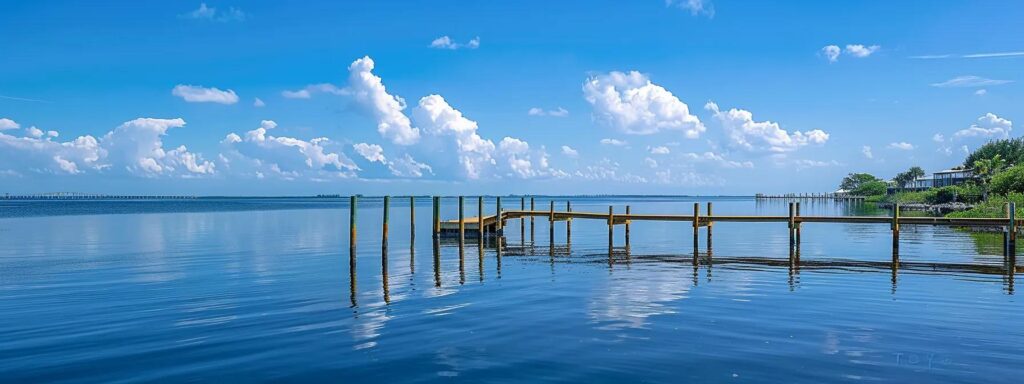
Cleaning Protocols for Various Durable Dock Surfaces
Regular cleaning is essential in preserving the integrity of dock materials. For pressure-treated wood, using a mild detergent with water and a soft-bristle brush helps remove debris without damaging protective treatments. Non-porous surfaces like aluminum or composites can handle slightly stronger cleaning agents; however, harsh chemicals should be avoided to prevent damage.
Establishing a routine cleaning schedule—ideally biannual—helps slow the rate of deterioration and allows homeowners to catch minor issues before they become costly repairs.
Inspection Practices to Maintain Dock Material Soundness
Routine inspections are critical for identifying early signs of wear, such as cracks, loose fasteners, discoloration, or surface erosion. Homeowners should conduct visual and physical inspections at least twice a year and after severe weather events. Regular assessments help detect vulnerabilities early, allowing for timely repairs and ensuring ongoing safety and durability.
Applying Protective Treatments to Extend Material Service Life
Protective treatments like sealants, stains, and specialized coatings form a barrier against moisture, UV radiation, salt exposure, and biological attack. Wood surfaces benefit from sealants that prevent water absorption and reduce mildew risk, while composite and polymer materials may be treated with UV inhibitors and antioxidants.
Reapplying these treatments periodically as recommended by manufacturers can extend a material’s service life by up to 25% and simplify maintenance, preserving both function and appearance.
Addressing Common Wear and Tear on Long-Lasting Dock Materials
Even durable dock materials will eventually show wear from cracking, chipping, and fastener loosening, especially in high-traffic areas. Addressing these issues promptly—whether by re-sealing damaged wood, replacing corroded fasteners, or refinishing composite surfaces—prevents further damage and maintains both the dock‘s operational integrity and aesthetic value.
A proactive approach to repairs, rather than waiting for extensive damage, can significantly extend the life and safety of your dock.
Seasonal Care for Docks Built With Durable Components
Seasonal maintenance routines help address challenges specific to different times of year. In the summer, increased UV exposure and higher temperatures may require more frequent cleaning and protective reapplications. In the winter, rapid temperature fluctuations, ice formation, and increased moisture necessitate careful de-icing and proper drainage to reduce stress on materials.
A seasonal maintenance schedule—beginning with a spring inspection to assess winter damage and preparation for the summer months—protects the dock throughout the year and maximizes its durability.
Eco-Friendly Considerations for Durable Materials in Waterfront Dock Projects
Sourcing Sustainable and Responsibly Harvested Dock Materials
Sustainability is an increasingly important factor in material selection. Homeowners are now prioritizing materials that are harvested or manufactured using environmentally responsible practices. For example, sustainably harvested pressure-treated wood, certified by organizations such as the Forest Stewardship Council (FSC), ensures that the raw material comes from well-managed forests.
Using these eco-friendly materials not only supports the health of local marine ecosystems and reduces deforestation but can also enhance the market value of your waterfront property.
The Use of Recycled Content in Durable Dock Manufacturing
Many modern composite decking systems and polymers incorporate recycled plastics and wood fibers, reducing reliance on virgin resources and promoting a circular economy. Recycled composites offer comparable durability, UV resistance, and low-maintenance benefits, making them a sustainable and robust choice for dock construction.
By choosing materials with recycled content, homeowners support environmental innovation while achieving long-lasting performance without compromising durability.
Potential Environmental Effects of Different Dock Material Leachates
It is important to consider the potential for materials to leach chemicals into the water. Some treatments or coatings may release compounds that adversely affect marine life and water quality. Modern, eco-friendly coatings are designed to reduce these leachate levels to negligible amounts. Homeowners should select materials with positive environmental certifications and documented low-leachate performance to minimize ecological impact.
Options for Reusing or Repurposing Old Dock Materials
When docks reach the end of their service life, many components can be salvaged and reused in other projects such as outdoor furniture, garden structures, or secondary decking. By reusing or repurposing these materials, you reduce waste, lower project costs, and support sustainable construction practices.
Building Docks With Minimal Ecological Disturbance Using Appropriate Materials
Choosing materials that require fewer chemicals, are lightweight, and have low leachate potential is essential for protecting local marine ecosystems. Thoughtful design that minimizes in-water construction, utilizes modular systems, and maintains adequate water flow around the dock helps preserve the surrounding habitat and supports ecological balance.
Collaborating with environmental experts and conducting pre-construction assessments ensures that your dock project is not only durable but also environmentally responsible.
Cost Implications of Selecting Durable Materials for Waterfront Docks
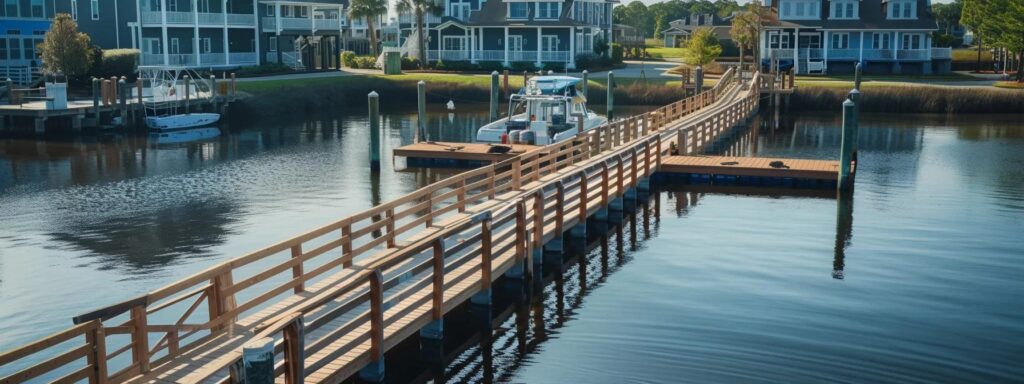
Upfront Purchase and Installation Costs for Durable Dock Options
High-performance materials such as composite decking, aluminum frameworks, and exotic hardwoods may have a higher initial cost compared to conventional options like untreated wood. However, these premium materials often justify the expense with superior longevity, reduced maintenance needs, and enhanced performance. While the initial outlay can be 20% to 30% higher, long-term savings from decreased repair and replacement costs can be significant.
Long-Term Economic Benefits of Investing in Quality Dock Materials
Investing in durable, high-quality dock materials reduces frequent maintenance expenses, limits downtime, and can increase the overall value of your waterfront property. Over time, docks built with premium materials may require fewer repairs and even contribute to higher property appraisals. The long-term economic benefits, including extended lifespan and reduced upkeep, make the initial investment worthwhile.
Anticipating Maintenance and Repair Expenditures for Dock Materials
Even the most durable docks will eventually require periodic maintenance and occasional repairs. Budgeting for routine inspections, cleaning, and minor fixes—as well as planning for major maintenance cycles every 10–15 years—is essential to protect your investment. Understanding these cycles helps balance upfront costs with long-term financial planning, ensuring continuous safety and performance.
How Durable Dock Construction Can Affect Property Appraisals
A well-constructed dock using durable materials enhances the overall appeal of waterfront properties. Professional dock construction is often associated with reduced future repair costs and improved aesthetics, which can boost property values by at least 10%. Investing in quality dock construction not only ensures functionality but also contributes positively to property appraisal and market value.
Understanding Warranty Coverage for Your Chosen Dock Materials
Warranty coverage is a key consideration when selecting dock materials. Manufacturers often offer extended warranties—ranging from 10 to 50 years—that provide assurance against defects, material failures, and premature degradation. Reviewing warranty terms ensures that your long-term maintenance strategy aligns with the manufacturer’s performance guarantees, reducing financial risk and offering peace of mind.
Frequently Asked Questions
Q: What factors should homeowners consider when selecting materials for waterfront docks? A: Consider resistance to saltwater corrosion, water absorption, UV degradation, and mechanical stress. Evaluating maintenance requirements, warranty coverage, and environmental impact helps ensure long-term durability and sustainability.
Q: How does pressure-treated woodcompare to composite materials for long-term dock construction? A: Pressure-treated wood is a cost-effective traditional option with a lifespan of 20–30 years when maintained properly. Composite materials, on the other hand, offer enhanced longevity of 40–50 years, require less maintenance, and provide superior resistance to moisture, UV radiation, and marine growth.
Q: Why are aluminum and polymermaterials increasingly popular in dock construction? A: Aluminum and polymer materials are lightweight, highly resistant to corrosion, and require minimal upkeep. They perform well in saltwater and extreme weather conditions, ensuring a long service life with reduced maintenance needs.
Q: What maintenance practices are recommended to extend the lifespan of dockmaterials? A: Regular cleaning, inspections, and protective treatments such as sealants and UV inhibitors are essential. Seasonal maintenance and prompt repairs of wear and tear help maintain structural integrity and extend lifespan.
Q: How do eco-friendly materials benefit both the environment and dockperformance? A: Eco-friendly materials, including recycled composites and sustainably harvested wood, reduce environmental impact by lowering waste and resource depletion. They offer durable performance while minimizing chemical use, which aligns with sustainable construction practices.
Q: Can investing in premium dockmaterials increase property value? A: Yes, high-quality dock construction often enhances property appraisals. Professional docks using durable materials can boost overall property value by at least 10% due to reduced future repair costs and improved aesthetics.
Q: What is the expected frequency of major maintenance for a durable waterfront dock? A: Durable dock materials typically require major maintenance every 10–15 years, with regular minor upkeep and inspections conducted annually to ensure long-term safety and performance.
Final Thoughts
Durable dock construction demands careful material selection, rigorous maintenance, and thoughtful design to ensure long-term performance in harsh marine environments. Using high-quality, resilient materials enhances safety and functionality, increases property value, and reduces future repair costs. By embracing eco-friendly options and investing in protective treatments, you secure a dock structure that withstands environmental challenges and remains a valuable asset for generations to come.

